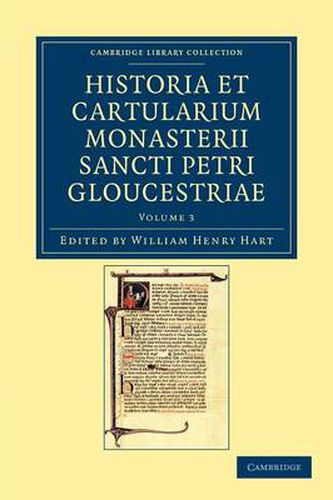Readings Newsletter
Become a Readings Member to make your shopping experience even easier.
Sign in or sign up for free!
You’re not far away from qualifying for FREE standard shipping within Australia
You’ve qualified for FREE standard shipping within Australia
The cart is loading…






The abbey of St Peter, which later became Gloucester Cathedral, had its origins in the seventh century and was re-established in the eleventh. It benefited considerably from Norman patronage, growing in importance, size and wealth. Henry III was crowned there in 1216, and it is where Edward II was buried. It subsequently became a place of pilgrimage, and received several benefactions from Edward III. Volume 3 of the abbey’s records, edited by W. H. Hart and published in 1867, contains charters 909-1029, an appendix and glossary, and an index to the three volumes. There are detailed manorial extents dating from the 1260s, and an undated treatise on the management of manors. The volume ends with an assortment of legal and other documents from a range of dates, including sixteenth-century insertions. The cartulary is a valuable source of information on medieval manorial landholding in the West Country.
$9.00 standard shipping within Australia
FREE standard shipping within Australia for orders over $100.00
Express & International shipping calculated at checkout
The abbey of St Peter, which later became Gloucester Cathedral, had its origins in the seventh century and was re-established in the eleventh. It benefited considerably from Norman patronage, growing in importance, size and wealth. Henry III was crowned there in 1216, and it is where Edward II was buried. It subsequently became a place of pilgrimage, and received several benefactions from Edward III. Volume 3 of the abbey’s records, edited by W. H. Hart and published in 1867, contains charters 909-1029, an appendix and glossary, and an index to the three volumes. There are detailed manorial extents dating from the 1260s, and an undated treatise on the management of manors. The volume ends with an assortment of legal and other documents from a range of dates, including sixteenth-century insertions. The cartulary is a valuable source of information on medieval manorial landholding in the West Country.